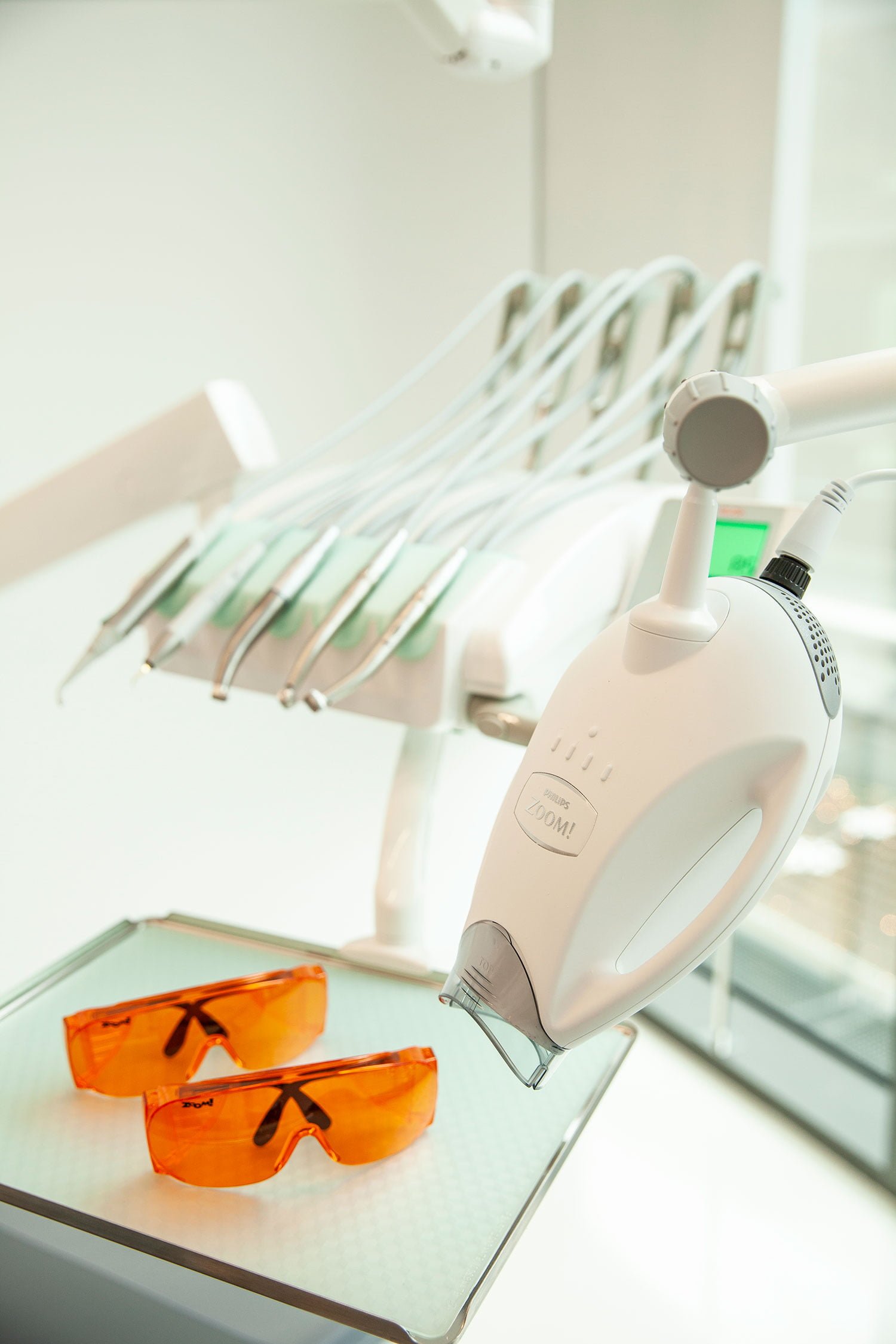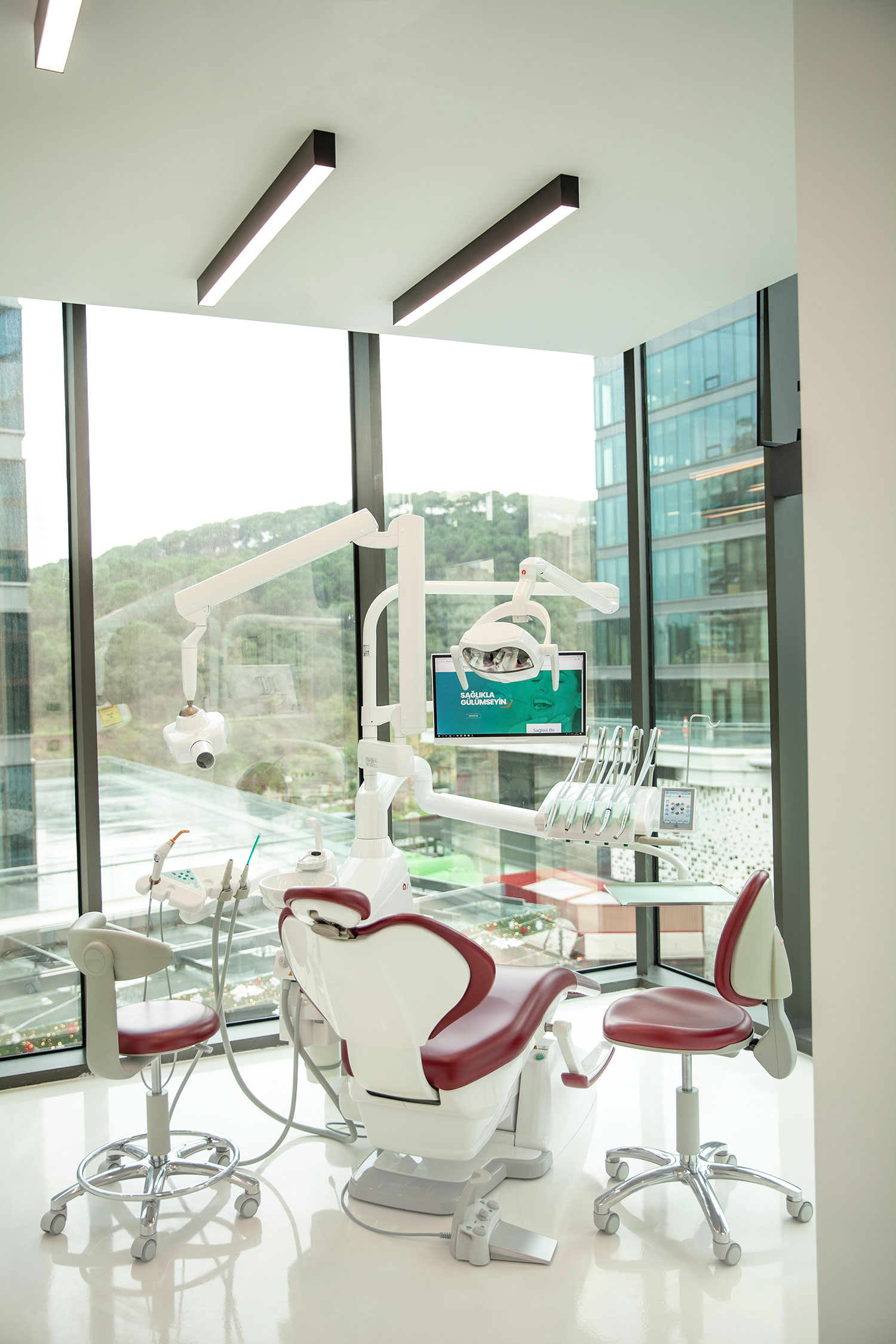

Conservative
Dental Treatment
Dental caries are known as diseases in the form of cavities with dark or opaque (white) coloration in enamel, dentin, and cementum, which are tooth-hard tissues.
DENTAL CARIES
Dental caries are known as diseases in the form of cavities with dark or opaque (white) coloration in enamel, dentin, and cementum, which are tooth-hard tissues.
The bacteria in the mouth secrete acid to obtain the nutrients they need from the residues of food left in the mouth. These acids dissolve the mineral tissue of the teeth, causing the enamel of the tooth to deteriorate and ultimately leading to the onset of tooth decay and cavities.
Individuals with a high proportion of acidic and sugary foods in their diet are particularly at risk of caries if they also have a low fluoride content in their water. Although saliva is a natural defense mechanism against the acid formed by bacterial plaque, it cannot prevent caries by itself. Diseases or medications that reduce the flow and quantity of saliva also accelerate the formation of caries. Therefore, dentists often recommend sugar-free chewing gum as it increases saliva flow.
What Can Be Done to Prevent Dental Caries?
The most effective way is to brush your teeth in the morning after breakfast and in the evening before going to bed and to use dental floss regularly. As food residues accumulate mostly in the recesses on the chewing surfaces of the teeth and in the interfaces where the teeth touch each other, small-headed toothbrushes should be preferred. The inner surfaces of the teeth, the outer surfaces, the chewing surfaces, and the top of the tongue should be brushed, and dental floss should be used at the interfaces. Brushes should have moderately stiff or soft bristles and should be replaced at regular intervals. The bristles should not be worn and should be kept in a bacteria-free condition. As an aid to tooth brushing, fluoride mouthwashes can also be used to eliminate bad breath, providing an antiseptic effect and a feeling of freshness and cleanliness.
Another measure is to try to consume sugary and acidic foods at main meals and not to eat anything between meals. Dental caries is more common today than in the past. Research shows that while the caries rate in the teeth of ancient people did not exceed 5%, today this rate can reach up to 95%. This is due to changing eating habits. Since ancient people ate hard and natural foods, teeth were cleaned naturally. Today, with the development of the convenience food industry, the consumption of such foods has also increased. Foods such as biscuits, candies, chocolates, and soda, which are always at hand, are now considered the main culprits for the increase in dental caries because they are acid-forming substances that stick to the teeth.Diş hekimine muntazam aralıklarla başvurmak bir çürüğü önlemek ya da erken yakalamada en iyi yoldur. Ayrıca sıcak ve soğuğa duyarlı dişler ya da ağrılı dişlerde veya tebeşirimsi renkte olan başlangıç çürükleri, kahverengi renklemeler ve oyuklar gibi durumlarda vakit geçirilmeden hekime başvurulması tedavinin şeklini değiştirecek ve zorluğunu azaltacaktır.
Another way to prevent dental caries is to strengthen the tooth structure. The most effective substance used to strengthen the tooth structure is “fluorine” compounds. When fluorine compounds are applied during the period when teeth are developing or after the teeth are seen in the mouth, they enter the structure of the tooth and provide a more resistant structure against caries. The caries-preventive effect of fluorine compounds is mainly realized in four ways:
- Adding a certain amount of fluorine compounds to drinking water,
- Giving the child fluorine tablets that are readily available on the market,
- Utilizing the effect of fluorine compounds added to table salt, toothpaste, or mouthwash,
- By applying special fluorine compounds in the form of gels to the teeth in the dentist’s office.
The easiest method among these practices is brushing teeth with fluoride toothpaste from the age of 3 in the morning and evening and using fluoride mouthwash after the age of 6. Other applications are not yet widely used in our country and do not have an adequate infrastructure. There is, for instance, no clear standardized study on the fluorine content of drinking water in most of our regions and the amount of fluorine taken in the diet. Fluorine is a necessary element for the body. However, when taken in excess, it may change the color of the teeth or cause deformations in the bones. Therefore, applications other than toothpaste and mouthwash must be done under the supervision of a physician.
DENTAL TREATMENTS
The treatment of damage to the teeth caused by dental caries, trauma, and various genetic and immunological diseases consists of two main parts: Conservative and Endodontic.
CONSERVATIVE DENTAL TREATMENT APPLICATIONS
Conservative dental treatments are operative treatments that are visible to the naked eye in the mouth and mostly concern the enamel and dentin parts of the teeth. These treatments involve cleaning and removing the parts of the tooth that have been damaged by caries or other causes with special high-tech devices used in dentistry, isolating the remaining living and intact tissues with special insulating materials, and finally restoring them with filling materials to mimic the structure of the natural tooth. Many materials have been tested to date as permanent filling materials, but amalgam (metallic) and composite (white) fillings are most commonly used today.
Amalgam Fillings (Metallic Fillings)
Amalgam fillings are also known as silver fillings. Amalgam is obtained by mixing silver, tin, and copper alloy with mercury. Mercury, which makes up 45-50% of the mixture, binds the metals together, creating a durable filler material. Amalgam fillings have been improved in dentistry for 150 years and are still frequently used. The biggest reason for preferring amalgam fillings is that it is a harmless, long-lasting, and inexpensive filling material. Furthermore, the ease and short time of its application is one of its other advantages.
However, the biggest disadvantages of amalgam fillings are that they contain toxic substances such as mercury and are not aesthetic. In many studies conducted to date, no consensus has been reached on the toxicity of mercury in amalgam fillings. Many researchers state that the amount of mercury released from amalgam fillings with chewing and grinding is much less than the amount taken in with water, air, and nutrients. Although it is claimed that the removal of amalgams cures some diseases thought to be caused by mercury, this has not been scientifically proven.
What is Composite Resin?
It is a plastic mixture with silicon dioxide particles. They are defined as white fillings as they are tooth-colored. In the 1960s, they were used only in the anterior teeth; however, with the further development of the material, they can successfully be applied to the posterior teeth as a filling material that is resistant to chewing pressures and less abrasive.
How are composite fillings made?
Composite fillings are placed layer by layer in prepared cavities, and each layer is hardened with a special light. After this process, the composite fillings are shaped and corrected according to the tooth. All these procedures take longer than amalgam filling. Nowadays, the duration and durability of composite fillings in the mouth are close to the lifespan of amalgam.
The biggest advantage of composite fillings is their aesthetics. In addition, since these fillings are well bonded to the teeth, they support the tooth tissues and prevent fractures and heat penetration. Composites can be used not only to restore caries but also for cosmetic effects by changing the color and shape of teeth. The most significant disadvantage is the sensitization after the procedure. The color of the fillings can also be slightly altered by coloring foods such as coffee and tea.
Polishing can also be performed on composites in the same session. However, in the case of massive or multiple tooth restorations, it would be better to follow up the patient one more time and make the necessary corrections, if any, both aesthetically and functionally.
With these materials, major losses in the anterior teeth can be restored, so it should be explained to the patients that being careful in biting will prolong the life of these restorations. They should be reminded again that food and beverages that can stain may change the colors of the fillings, no matter how well polished, especially after the applications made on the front face. For teeth that have been restored due to abrasion, the most important thing is to recommend toothbrushes that are not too hard to the patient and to ensure that they can correct their brushing methods.
Our Specialties
Our customers are our priority, and we offer quality dental services with a team of experts. Learn more about our services.
Vadi İstanbul 2A Ofis Ayazağa Mah. Cendere cad. No:109/1 D:27 Sariyer

